The smartphone industry is consistently evolving and new technologies are consistently hitting the market. Many of these technologies make the overall performance of the smartphone better. Of course, this includes the performance of the front camera. If you are a lover of selfies and one of the reasons you purchase a smartphone is for its selfie capacity, then this article is for you. Our top 10 smartphones for selfies column is a bi-monthly (once in two months) column. The list usually contains smartphones (old or recent) which we consider good enough for selfies. It may also contain some cheap options to give the different classes of users access to great selfie smartphones.
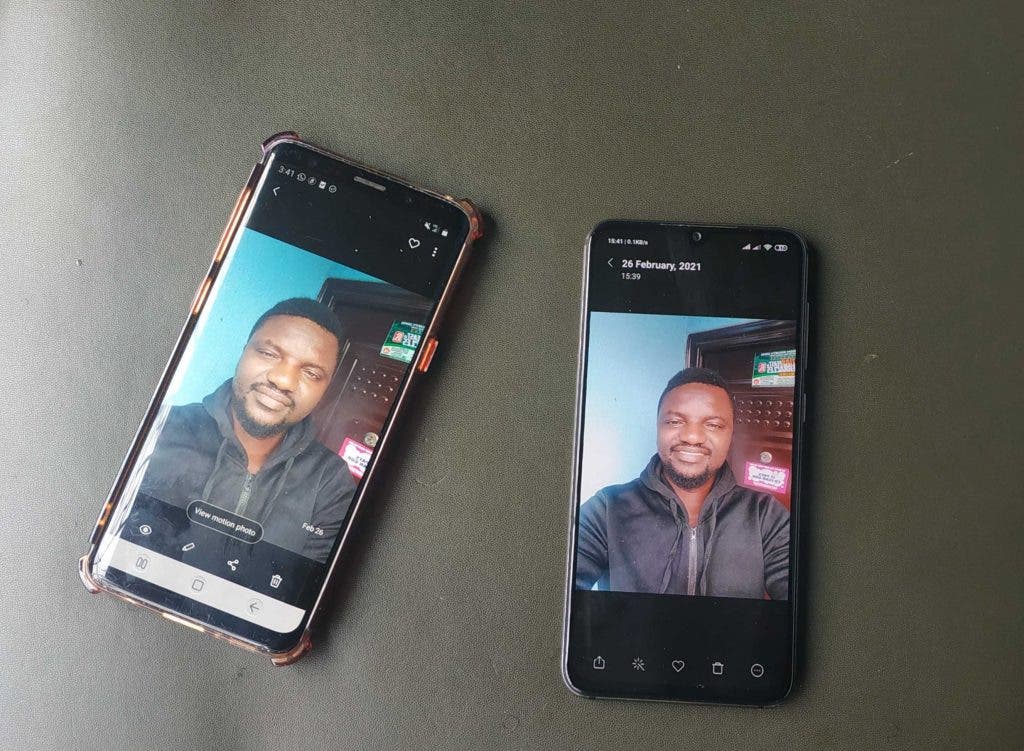
Since a plethora of smartphones hit the market yearly, it may be a bit confusing to make a choice. If you need a new smartphone with decent selfie capacity, then you may want to read to the end. Our last edition focused on smartphones for selfies that users can get at a cheap price. However, this edition has some of the latest smartphones in the market that also have good front cameras.
Do you need a pretty new smartphone with a decent front camera? Do you need a 2021 smartphone whose front camera will not disappoint? Then, the first few devices on this list will be your best bet. Of course, like we always advise, our posts do not always chase megapixels. In fact, a high pixel camera does not always perform better. In addition to the pixel size, there are other details that selfie lovers should consider. Top brands like Apple, Huawei, Samsung, Google, and a few others do not always chase pixel, however, they have some of the best selfie cameras. We look at other front camera capabilities like software optimization, beautification features, AI features, portrait mode, and more.
Before we go into the top 10 smartphones for selfies list, it is important to note that this is usually a very long read. However, if you do not have the time for the entire read, below is the list of smartphones with their front camera specification.
Selfie Camera Specs Sheet
- Xiaomi 12 Pro: 32 MP, 26mm (wide), 0.7µm; HDR, panorama; 1080p@30/60fps, 720p@120fps
- Samsung Galaxy S22 Ultra: 40 MP, f/2.2, 26mm (wide), 1/2.82″, 0.7µm, PDAF; Dual video call, Auto-HDR; 4K@30/60fps, 1080p@30fps
- OnePlus 10 Pro: 32 MP, f/2.2, (wide), 1/2.74″, 0.8µm; Auto-HDR; 1080p@30fps, gyro-EIS
- Redmi K50 e-sports version: 20 MP, f/2.4, 18mm (ultrawide); 1080p@30/60fps, 720p@120fps, HDR
- Huawei nova 6 5G: 32 MP, f/2.0, 26mm (wide), 1/2.8″, 0.8µm, PDAF; 8 MP, f/2.2, 17mm (ultrawide); HDR; 4K@30fps
- Huawei P50 Pro: 13 MP, f/2.4, (wide), AF; Panorama, HDR; 4K@30fps, 1080p@30/60/240fps
- Google Pixel 6 Pro: 11.1 MP, f/2.2, 20mm (ultrawide), 1.22µm; Auto-HDR, panorama; 4K@30fps, 1080p@30/60fps
- Asus ZenFone 7 Pro: Motorized flip-up main camera module; 64 MP, f/1.8, 26mm (wide), 1/1.72″, 0.8µm, PDAF, OIS; 8 MP, f/2.4, 80mm (telephoto), PDAF, OIS, 3x optical zoom; 12 MP, f/2.2, 113˚, 17mm (ultrawide), 1/2.55″, 1.4µm, dual pixel PDAF; Dual-LED flash, HDR, auto panorama (motorized rotation); 8K@30fps, 4K@30/60/120fps, 1080p@30/60/240fps, 720p@480fps; gyro-EIS, HDR
- Samsung Galaxy S22: 10 MP, f/2.2, 26mm (wide), 1/3.24″, 1.22µm, Dual Pixel PDAF; Dual video call, Auto-HDR; 4K@30/60fps, 1080p@30fps
- Xiaomi 12: 32 MP, 26mm (wide), 0.7µm; HDR, panorama; 1080p@30/60fps, 720p@120fps
Top 10 smartphones for selfies – Disclaimer
The devices in the list are, in our opinion, great smartphones for selfies. Since we don’t get to see great smartphones for selfies regularly, some devices from our previous column may make an appearance on this column. If you are a selfie freak or you buy your smartphones for their selfie ability, then check out our list with good recommendations.
1. Xiaomi 12 Pro
In addition to the fact that this is Xiaomi’s latest flagship smartphone, the Xiaomi 12 has a decent front camera. However, this device does not come cheap as you will have to spend no less than $900 to own it. Released in December 2021, the Xiaomi 12 Pro comes with an impressive 32MP front camera. If you are someone that loves chasing pixel size, then you will not be disappointed. However, the front camera is not only wonderful for its selfie camera, but it also has some specific hardware tuning for a “perfect” selfie output.
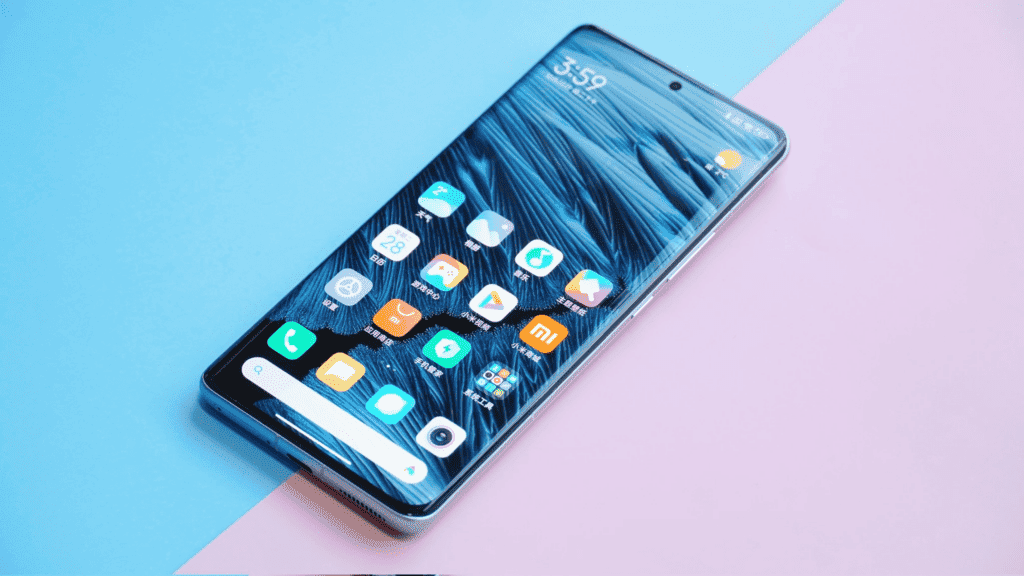
The front camera of the Xiaomi 12 Pro is from Chinese manufacturer, OmniVision (OV32B40). First off, this camera is able to shoot images that will cover the entire screen. The aspect ratio of the image is 16:9 or 4:3. Of course, with this resolution, the images obviously great and appealing. Furthermore, Xiaomi adds a beauty mode which is active by default. However, users can choose to adjust this mode relative to their preferences or completely deactivate it. In addition, this smartphone’s front camera has Cinematic Effects that users can also activate. There is also a portrait mode with a decent effect that delivers top-notch selfies. However, with the portrait mode, HDR is not available.
In the video aspect, the Xiaomi 12 Pro front camera can record videos at Full HD (1920 x 1080 pixels) and 30/60 frames per second. It can also record 720p at 120 frames per second. Furthermore, the front camera video has a subtitle feature that is pretty accurate. You should try it out.
Key front camera specifications:
- 32 MP sensor with 0.7µm pixels
- Fixed-focus f/2.0-aperture lens
- HDR, panorama; 26mm (wide), 1/2.8″
- 1080p@30/60fps, 720p@120fps
Xiaomi 12 Pro succinct specs preview
The Xiaomi 12 Pro comes with a 6.73-inch LTPO AMOLED display that supports 1B colors, 120Hz refresh rate, Dolby Vision, HDR10+, 1500 nits peak brightness. This display supports 1440 x 3200 pixels resolution and has Corning Gorilla Glass Victus protection. The pixel density is 521 PPI thus you have a high-end level display.
Under the hood, this device comes with a flagship processor, Qualcomm Snapdragon 8 Gen 1 SoC. This chip is the best Android flagship processor in the market and it offers enough power and a lag-free experience. The Xiaomi 12 Pro also comes with up to 12GB of RAM and 256GB of internal storage. Unfortunately, there is no microSD card slot, thus, you can not further expand the internal storage of this device. On the rear, it has a triple 50MP camera setup. Specifically, this device comes with a 50MP (Dual Pixel PDAF, OIS) main camera, a 50MP telephoto camera (PDAF, 2x optical zoom), and a 50MP ultra-wide-angle camera. To keep its lights on, this flagship smartphone uses a 4600 mAh that supports 120W fast charging (100% in 18 min), 50W wireless charging (100% in 42 min), and 10W reverse wireless charging.
2. Samsung Galaxy S22 Ultra
The Samsung Galaxy S22 Ultra is a top-notch flagship smartphone with a decent selfie camera. For those who say it’s either Samsung or Apple, the Galaxy S22 Ultra front camera beats the entire iPhone 13 series front camera, at least on DxOMark. Although the selfie camera performance is strong, it is not a significant improvement from last year’s Galaxy S21 Ultra. It outputs high detail images with a wide dynamic range. However, its low points are in the video which has some noise.
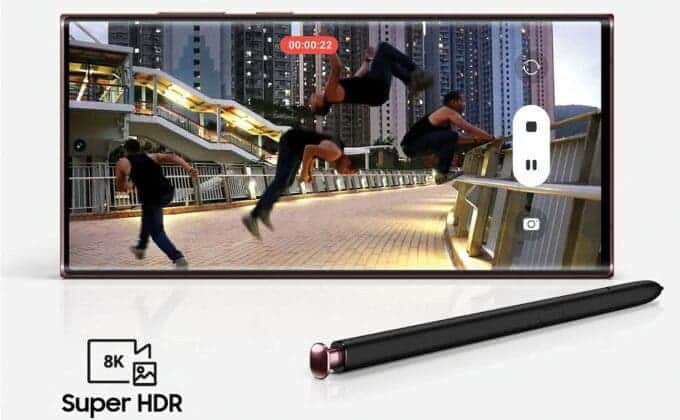
Even in low-light environments, its selfies are decent and consistent. The color is generally accurate and the white balance is great. The autofocus works perfectly although the depth of field is fairly narrow. One thing we noticed about the Galaxy S22 Ultra front camera is that the detail level is excellent but the noise is visible. This means that the camera prioritizes detail preservation over noise reduction. Furthermore, in a low-light environment, there is a flash which is the display. This gives more exposure to the image.
This front camera also supports portrait mode which is better than most smartphones in the market. The background blur is decent and the subject separation is accurate. However, the noise appears here and there, with no even distribution.
Key front camera specifications:
- Primary 40 MP sensor, 0.7µm pixels
- F/2.2-aperture lens with 80° field of view
- Phase detection autofocus
- Display flash
- 4K@30/60fps, 1080p@30fps
For its videos, this camera supports 4K@30/60fps and 1080p@30fps videos. Apart from the pronounced noise, every other aspect of the video appears perfect. The exposure dynamic range, white balance, and skin tone are accurate and vivid. Furthermore, the autofocus is fast and reliable and the stabilization is generally acceptable.
Samsung Galaxy S22 Ultra succinct specs preview
Released in February 2022, the Samsung Galaxy S22 Ultra is the latest top-of-the-line model in the Galaxy S22 series. This device comes with a 120 Hz AMOLED 6.8-inch quad-HD+ (3088 x 1440) Dynamic AMOLED display that supports HDR10+ video. Under the hood, this device comes with either the Snapdragon 8 Gen 1 or the Exynos 2200. As usual, in China and the U.S., buyers will have the Snapdragon 8 Gen 1 version. However, in Europe and other markets, the Exynos 2200 version will be sold. Both versions come in multiple memory/storage configurations ranging from 8GB / 12GB of RAM and 128GB / 256GB / 512GB / 1TB storage.
On the rear, this smartphone comes with a quad rear camera setup. Specifically, this device uses a 108MP main camera that supports OIS. It also uses a 10MP periscope telephoto camera that supports 10x optical zoom and OIS. Furthermore, there is another 10MP that supports OIS and 3x optical zoom. Lastly, there is a 12MP ultra-wide-angle camera. It is interesting to note that three of the four cameras on the rear supports Optical Image Stabilization (OIS). Under the hood, this device has a 5000 mAh battery that supports 45W fast charging, 15W wireless charging, and 4.5W reverse wireless charging. However, recent tests reveal that the 45W fast charging is not any different from the previous 25W charging.
3. OnePlus 10 Pro
Since 2019 OnePlus 7, the Chinese manufacturer has been consistent with its front camera. Technically, the OnePlus 7, OnePlus 8, and OnePlus 9 series use the same front camera. According to OnePlus, when the camera is great, there is no need to make changes. However, after three years, OnePlus finally upgrades its front camera. The interesting part is that the upgrade is huge. The OnePlus 10 Pro comes with a 32MP front camera, this is twice the pixel size of the sensor it has used for the past three years. This sensor also offers a decent dynamic range for portrait images in a bright environment and camera output is excellent.

Key front camera specifications:
- 32 MP (wide), 1/2.74″, 0.8µm
- Fixed-focus f/2.2-aperture lens
- Auto-HDR
- 1080p/30 fps video, gyro-EIS
The increase of the pixel size, as well as some software optimization, significantly improves the OnePlus 10 Pro front camera shooting in a low-light environment. This was one of the down points of the previous 16MP camera. However, this sensor still sticks with gyro-EIS. Although OIS would have been better, not that many front cameras use OIS. The OnePlus 10 Pro still comes with a single-person field of view front camera and it does not support autofocus.
Furthermore, this device does not come with autofocus which is another minus. However, it comes with a portrait mode that delivers high-intensity background blur.
OnePlus 10 Pro succinct spec preview
The OnePlus 10 Pro was released in January this year and it comes with a 6.7-inch LTPO Fluid2 AMOLED display. Due to its ultra-thin bezels, this device boasts a 90.0% screen-to-body ratio and has a resolution of 1440 x 3216 pixels. Under the hood, this device comes with a Snapdragon 8 Gen 1 SoC coupled with up to 12GB of RAM and 512GB of UFS 3.1 internal storage. On the rear, it has a triple camera setup with Hasselblad Color Calibration. Specifically, this device uses a 48MP wide-angle, 8MP telephoto, 50 ultrawide angle sensor. The battery size is 5000 mAh and it supports 80W wired fast charging and 50W fast wireless charging. This device also supports reverse wireless charging as well as IP68 dust/water resistance
4. Redmi K50 e-sports version
The first thing to note about this smartphone is that it is a gaming smartphone. Although the selfie camera is decent, you will be wasting a lot of resources if you purchase this device for its front camera alone. If you need a high-performing smartphone with a decent front camera, then you should consider this device. The Redmi K50 e-sports version comes with a 20MP selfie shooter with an f/2.4 aperture. For videos, this device supports 1080p@30/60fps and also has the option of 720p@120fps videos. Furthermore, this device support HDR which preserves details when there is no light and limits light from overexposure. The overall output is balanced in terms of details, texture, and colour.
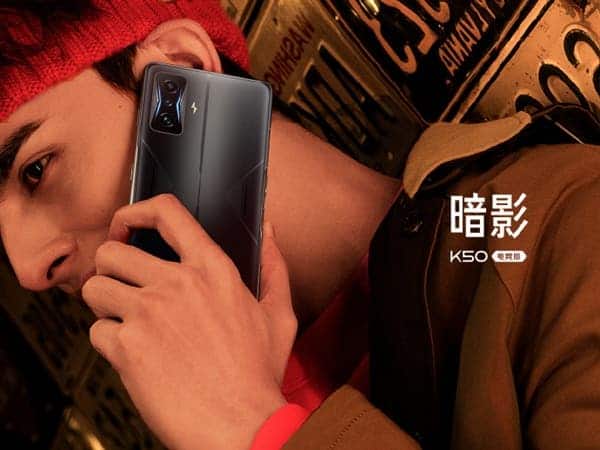
Key front camera specifications:
- 20 MP, f/2.4, (wide)
- HDR
- 1080p@30/60fps, 720p@120fps, HDR
Redmi K50 e-sports version
As a gaming device, one of the major selling points of this smartphone is its heat dissipation system. Almost the entire rear of this device has a heat-absorbing material to keep the temperature in check during gaming. To get full details of the heat dissipation system of this smartphone, click here.
The Redmi K50 e-sports version comes with a 6.67-inch OLED that supports 1080 x 2400 pixels resolution and a 120Hz refresh rate. Under the hood, this smartphone uses the Snapdragon 8 Gen 1 5nm chip. This device uses 8GB/12GB of RAM and 128GB/256GB of internal storage. On the rear, it has a triple camera setup which includes a 64MP main sensor, 8MP ultrawide, and 2MP macro sensor. The battery size is only 4700 mAh and it supports 120W fast charging. According to the company, this smartphone will get a full charge from 0% to 100% in only 17 minutes.
5. Huawei nova 6 5G
The interesting part about the Huawei nova 6 5G is that it is the cheapest smartphone on this list. In fact, it costs less than half of many of the devices on this top 10 smartphones for selfies (second edition). On the front, this device comes with a dual-camera setup like many devices in the market. The main camera is a 1/2.8-inch 32MP image sensor. This camera has a 26mm-equivalent field of view and an f/2.2 – aperture lens. Like most devices in the market, it supports 4K videos.
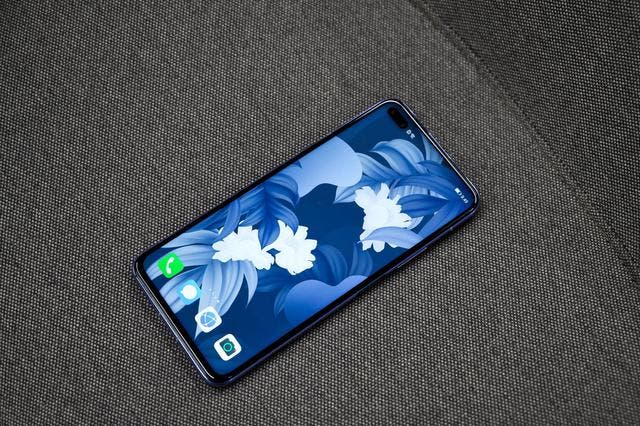
Key front camera specifications:
- Dual front camera
- 1/2.8-inch 32MP sensor with f/2.2 aperture lens, 26mm equivalent
- 8 MP, f/2.2, 17mm (ultrawide)
- Secondary wide-angle and depth camera
- PDAF
- 2160p at 30 frames per second (4K)
Irrespective of the lighting condition, the Huawei nova 6 5G delivers a pretty acceptable exposure. This is a result of the wide dynamic range and good HDR processing. These features also make it possible for this device to capture good images in high-contrast situations
The white balance and skin tones are pretty accurate but for indoor images, there are some colour casts. Interestingly, with its optimizations, it manages to keep the noise under control. Furthermore, this device has a beautification filter that smoothes skin. Despite the smoothening, it still retains the details and preserves natural facial features.
Huawei nova 6 5G succinct spec preview
This device comes with a Kirin 990 (7 nm) SoC. It uses a 6.57-inch LTPS IPS LCD display that supports 1080 x 2400 pixel resolution. In addition, it has 8GB of RAM and 128GB/256GB of internal storage. On the rear, it has a triple camera setup with a 40MP main sensor. Furthermore, this device comes with a 4,200 mAh battery that supports a 40W fast charge.
6. Huawei P50 Pro
The Huawei P50 Pro will continue to appear on the list of best smartphones for selfies because it has the best front camera in the smartphone industry. In fact, no front camera from another brand comes close. On DxOMark rating, the first three smartphones in terms of selfie cameras are all Huawei smartphones. We didn’t have to struggle with the decision to include this device as one of the top smartphones for selfies. This smartphone also made our top 10 smartphones for selfies list in August and October last year. However, continues to have a spot here due to its blistering performance.
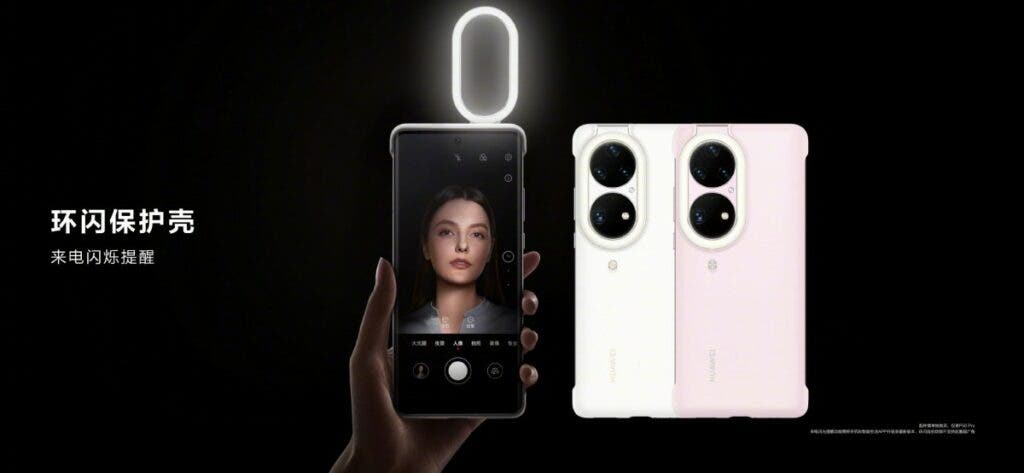
The Huawei P50 Pro front camera specification is not very different from last year’s Mate 40 Pro. This device comes with a 13 MP Sony IMX688 sensor (f/2.4-aperture lens with an 18 mm-equivalent focal length). Although this sensor is just 13MP, it performs better than many 32MP front cameras in the market. The front camera optimizations from Huawei are also another beautiful aspect of this device.
Unlike the Huawei Mate 40 Pro, the Huawei P50 Pro front camera comes with phase-detection autofocus (PDAF) system. This makes this smartphone the first Huawei device to come with this technology. The Chinese manufacturer also uses Artificial Intelligence (AI) to optimize the image quality of the front camera.
For better videos, the Huawei P50 Pro comes with staggered HDR processing and improved EIS (electronic image stabilization). While the HDR improves the image quality in low-light conditions and the wider lenses stabilize the image effect, the EIS helps with cropping and blurred images.
Generally, the Huawei P50 Pro front camera has very good exposure in both photos and videos. It also comes with a wide dynamic range while the white balance is quite accurate. Nevertheless, in low-light environments, the details are not as good and some noise may appear. Occasionally, users may experience autofocus and inaccurate skin tone issues. The dynamic range also significantly reduces in low-light videos.
Key front camera specifications:
- 13 MP 1/2.8″ sensor with 1.22µm pixel size
- 18 mm-equivalent lens with f/2.4 aperture
- PDAF, EIS
- 4K video, 2160p/60 fps, (2160p/30 fps tested)
Huawei P50 Pro succinct specifications
This smartphone comes with a 6.6-inch OLED display that supports a resolution of 1228 x 2700 pixels (~450 PPI density). Under the hood, we have a Kirin 9000 5nm chip that supports 5G. However, it is important to note that the Huawei P50 Pro can only use this device with 4G network. In addition to the Kirin 9000, some models of this device use the Snapdragon 888 4G SoC. This chip is also a 5nm processor that supports only 4G. This means that the Huawei P50 Pro does not support 5G connectivity.
In addition to the processors, this flagship smartphone also has up to 12GB of RAM and 128GB/256GB/512GB of internal storage. On the rear, it uses a quad camera setup. It has a 50MP main camera, a 13MP (ultrawide), 64MP periscope telephoto, and a 40MP black and white sensor. To keep its lights on, this device uses a 4360 mAh battery that supports 66W fast charging, and 50W wireless fast charging. This flagship smartphone is the first device to come with HarmonyOS 2 out-of-the-box. Of course, it does not support Google Mobile Services.
7. Google Pixel 6 Pro
When it comes to cameras, Google is one of the best in the industry. It will be strange to have a new Pixel smartphone that does not have a decent camera. However, Google is one of those companies that prove that a higher pixel does not mean a better camera. The Google Pixel 6 series comes with the highest-ever pixel camera on a Pixel smartphone. This smartphone uses an 11.1MP camera, this is not a mistake, it actually uses an 11.1MP camera. Nevertheless, the exposure of this camera is pretty decent. This is why it has a spot in this list of top smartphones for selfies.
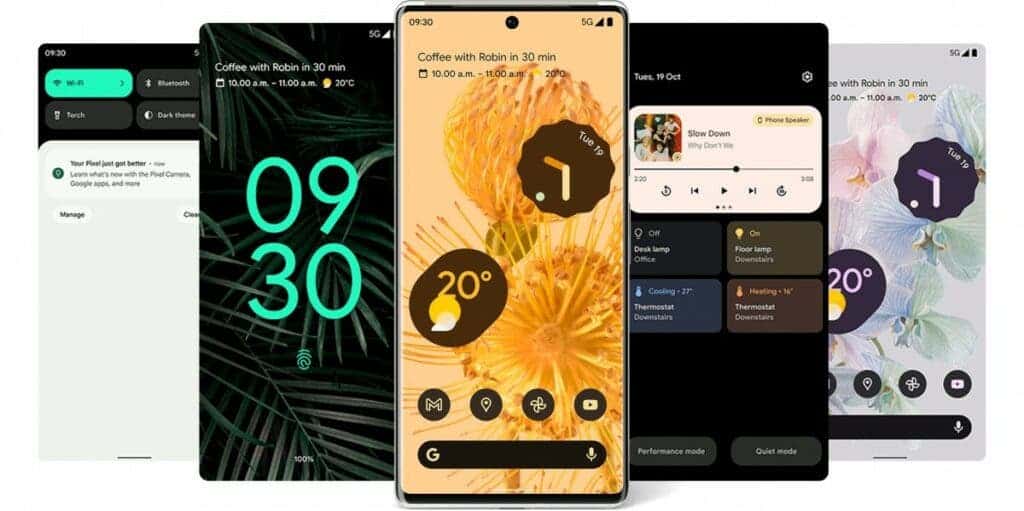
Key front camera specifications:
- 11.1MP 1/4.0″ sensor,
- 1.22 μm pixel width
- f/2.2-aperture lens with 20 mm-equivalent focal length
- Fixed focus
- Display-flash
- 4K@30fps, 1080p@30/60fps
- 94° ultrawide field of view
Google Pixel 6 Pro succinct spec preview
The Google Pixel 6 Pro comes with the 5nm Tensor SoC. The Google Tensor chip is Google’s self-developed processor and the Pixel 6 series launches this chip. Under the hood, the Pixel 6 Pro comes with 12GB of RAM and 128GB/256GB/512GB of UFS 3.1 internal storage. Furthermore, this device uses a 6.71-inch LTPO AMOLED display that supports 1440 x 3120 pixel resolution as well as a 120Hz refresh rate. This device also comes with a huge 5000 mAh battery that supports a 30W fast charge, 23W wireless charging, and reverse wireless charging. The battery department is one of the selling points of this smartphone.
8. Asus Zenfone 7 Pro
It is not a surprise that Asus’s latest flagship, Zenfone 7 Pro makes the list. This is actually the second time that this device will make our top 10 smartphones for selfies list. The selfie camera of this smartphone is basically the rear camera. The Asus Zenfone 7 Pro comes with a rotating camera design such that the rear camera module can rotate to the front for selfies. Thus, it ditches the regular smartphone design of a set of cameras on the rear and another in front. The implication of this is that the front camera uses the same camera hardware as the rear. Obviously, it will be hard to beat.
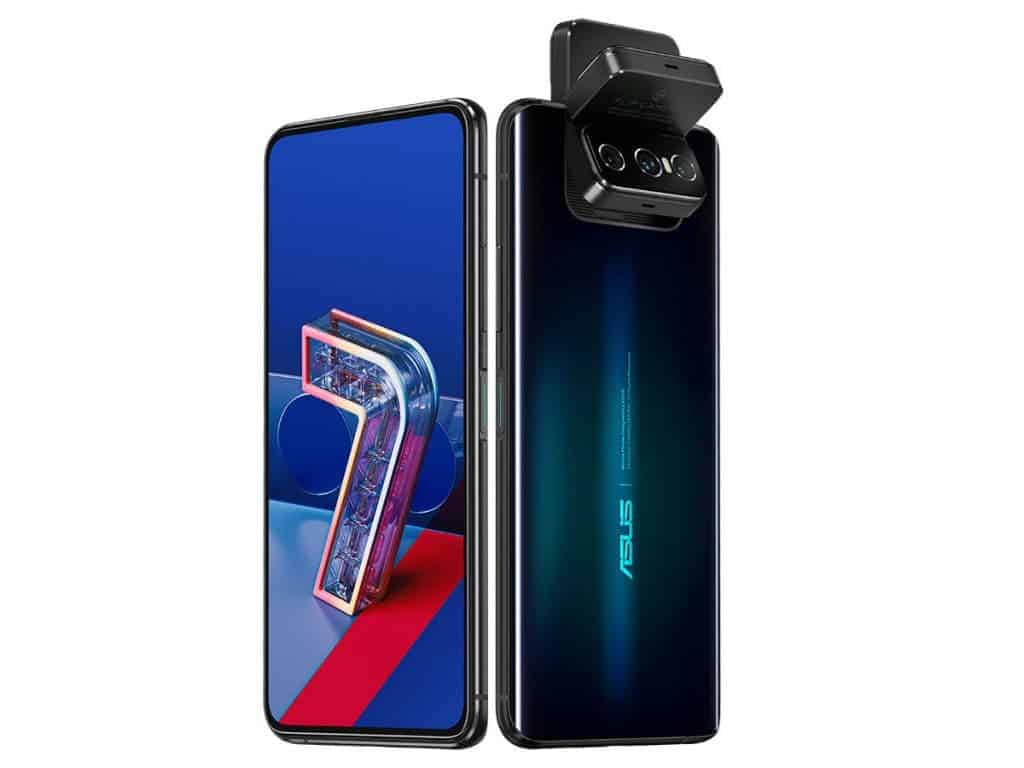
Key front camera specifications:
- Rotating triple-camera
- Primary 64 MP 1/1.72″ sensor, an f/1.8-aperture lens with 26 mm-equivalent focal length, PDAF
- Ultra-wide: 12 MP 1/2.55″ sensor, f/2.2-aperture lens with 16.6 mm-equivalent focal length, PDAF
- Tele: 8 MP sensor, an f/2.4-aperture lens with 80 mm-equivalent focal length, PDAF
- 4320p video at 30 frames per second (8K) (tested at 4K/30 fps)
- Dual-LED flash
- Qualcomm Snapdragon 865+ chipset
The front camera of the Asus Zenfone 7 Pro has a triple camera setup. This includes a 64 MP Quad-Bayer sensor, a 12 MP ultra-wide, and an 8MP telephoto camera. We can see the rest of the details in the specs sheet above.
Looking at the camera performance, this smartphone ticks all the boxes for still images. It comes with excellent exposure in all environments (light or dark), a wide dynamic range as well as accurate colors with nice skin tones. The large sensor outputs excellent details and the texture is overkill for a front camera. The bokeh effect is perfect and for each image, the noise level is nonexistent in the user’s face but slightly available in the background.
The Zenfone 7 Pro autofocus system is one of the best in the industry for front cameras. Thus, there is always an excellent focus irrespective of the shooting distance.
In terms of its video quality, this device is the best globally. This is because it outputs excellent texture and details. Even in low light conditions, it has a very good exposure where its competitors struggle. Just like in the images, for videos, there is little or no noise
Asus Zenfone 7 Pro succinct spec preview
For users who will want more information besides the front camera, here is a brief description of other features. The Asus Zenfone 7 Pro comes with a 6.67 inch AMOLED display that supports a 90Hz refresh rate and resolution of 1080 x 2400 pixels. This smartphone comes with the Snapdragon 865 5G+ SoC (Adreno 650) and supports 8GB of RAM and 256GB of UFS 3.1 storage. To keep its lights on, this device uses a huge 5000 mAh battery that supports 30W fast charging. According to the company, this smartphone gets 60% in 34 min and 100% in 93 min. Other features include 5G wireless connectivity, Wi-Fi, and Bluetooth 5.1.
9. Samsung Galaxy S22
The Samsung Galaxy S22 is the “baby” model of the Galaxy S22 series. Nevertheless, this smartphone is still a flagship device with decent features. No doubt, this device is one of the top smartphones for selfies at the moment. The front camera of this smartphone is 10MP which is significantly lower than the Galaxy S22 Ultra in terms of Pixel size. However, with regards to optimizations, the Galaxy S22 front camera and the Ultra model are very similar.

With the Galaxy S22 front camera, you can get a pretty balanced selfie. The color, depth, white balance and autofocus are acceptable. Despite the details of the image, there are noticeable noise that should not be much of a problem. Just like the Ultra model, the selfie camera of the Galaxy S22 supports portrait mode. Not many smartphones in the industry have front camera with this feature.
Key front camera specifications:
- Primary 10 MP sensor, 1.22µm pixels
- F/2.2-aperture lens with 80° field of view
- Phase detection autofocus
- Display flash
- 4K@30/60fps, 1080p@30fps
The front camera also supports 4K@30/60fps and 1080p@30fps videos just like the Ultra model. It further has a good exposure, dynamic range and autofocus. However, you will likely encounter noise as some point during shooting.
Samsung Galaxy S22 succinct specs preview
The Samsung Galaxy S22 comes with a 120 Hz AMOLED 6.8-inch quad-HD+ (3088 x 1440) Dynamic AMOLED display that supports HDR10+ video. This device draws its power from the Snapdragon 8 Gen 1 for buyers in the U.S. or China. However, buyers in Europe and other markets will have a Galaxy S22 that draws its power from the Exynos 2200 SoC. Both versions come in 8GB of RAM and 128GB of internal storage. There is no microSD card slot thus you can not expand the internal storage.
The Galaxy S22 also comes with a triple rear camera setup. This device uses a 50MP main camera that supports OIS. It also uses a 10MP telephoto camera that supports 3x optical zoom and OIS. Furthermore, there is another 12MP ultra-wide-angle camera. It is interesting to note that two of the three cameras on the rear supports Optical Image Stabilization (OIS). To keep its lights on, this device uses a 3700 mAh battery that supports 25W fast charging, 15W wireless charging, and 4.5W reverse wireless charging.
10. Xiaomi 12
It will be a mess to not include the Xiaomi 12 on this list of top smartphones for selfies when the Xiaomi 12 Pro makes the list. This is because both smartphones basically use the same front camera. There is no difference between the two in the front camera performance. Thus, if the front camera is your major target, the cheaper Xiaomi 12 will be a better option.
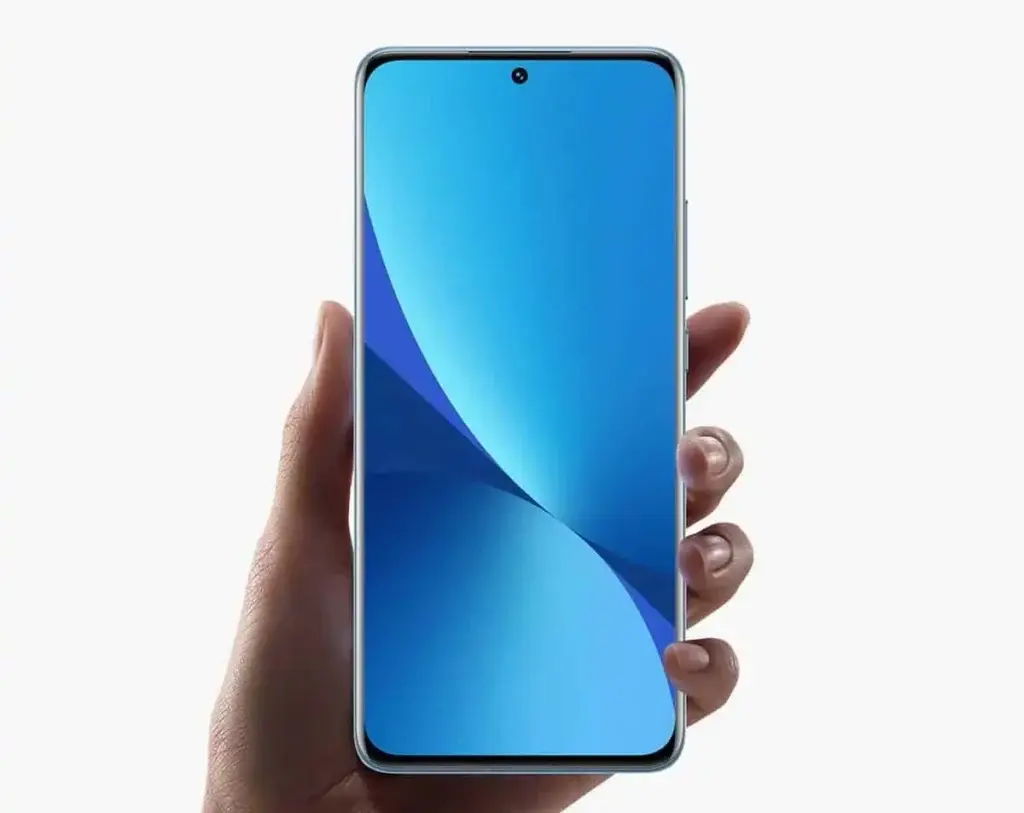
Key front camera specifications:
- 32 MP sensor with 0.7µm pixels
- Fixed-focus f/2.0-aperture lens
- HDR, panorama; 26mm (wide), 1/2.8″
- 1080p@30/60fps, 720p@120fps
Xiaomi 12 succinct specs preview
The Xiaomi 12 comes with a small 6.28-inch OLED display that supports 1B colors, 120Hz refresh rate, Dolby Vision, HDR10+, 1100 nits peak brightness. This display supports 1080 x 2400 pixels resolution and has Corning Gorilla Glass Victus protection. The pixel density is 419 PPI.




